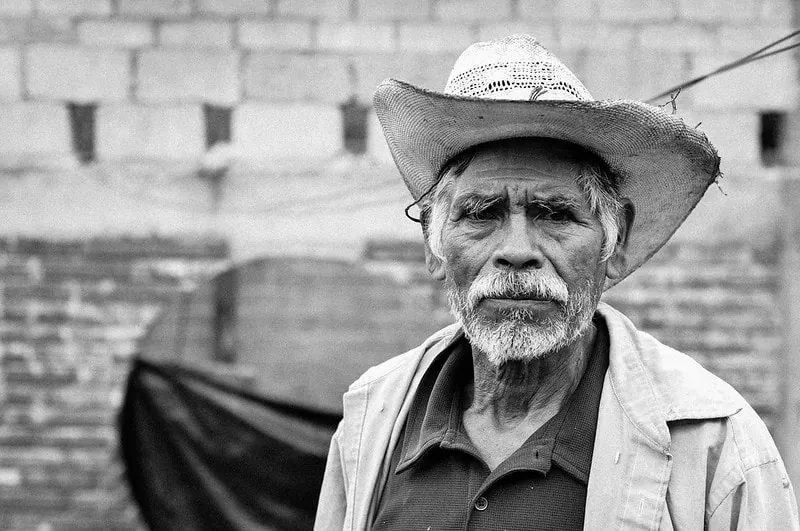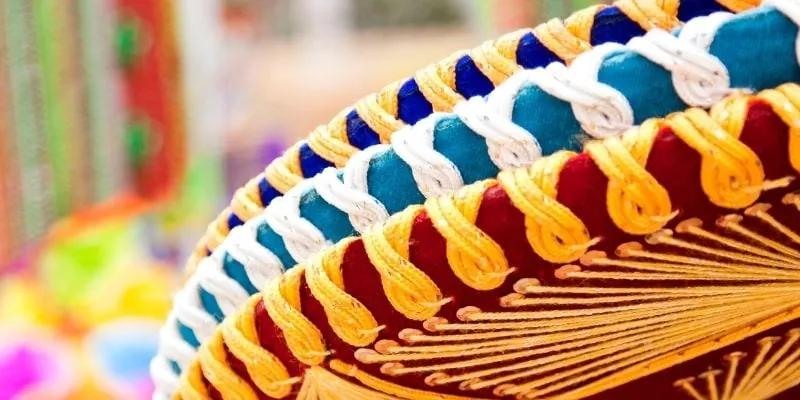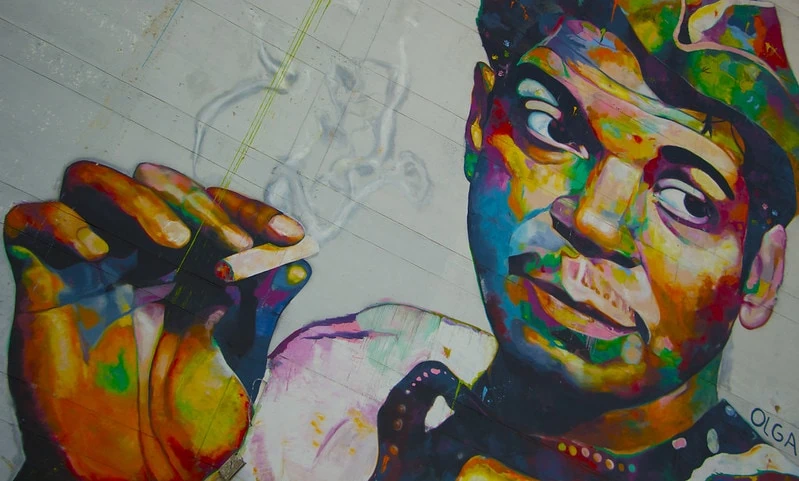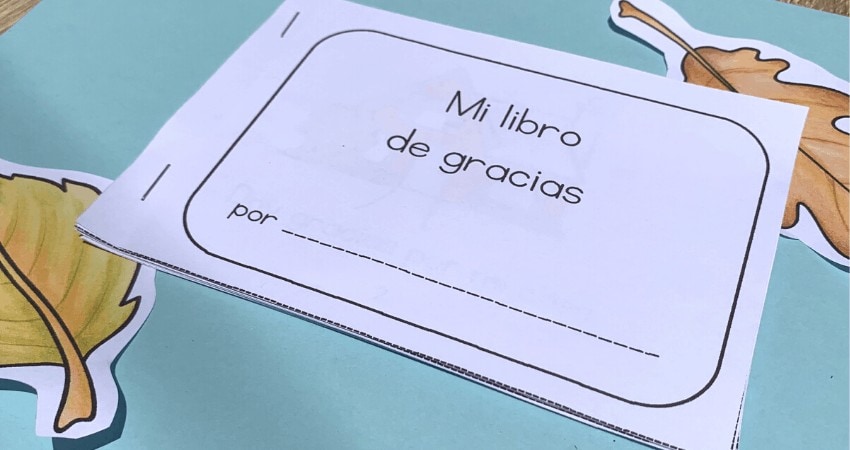What’s The Big Deal About Sombreros?
I have a certain photo deep in my social media archives. Me, in a sombrero.
Am I getting reactions yet? Horror?
Eye rolls in anticipation of a woke post?
Whatever the title made you feel, I invite you to grab a cuppa and settle in– this is a long one.
I think we are capable of thinking through complex cultural issues. It’s absolutely worth it when we have influence on students and communities.
Why Are Sombreros Loaded Symbols?
In this post, I never want to imply that anything is wrong with a sombrero itself. Rather, my question is: what has the sombrero come to be?
The photo was with my Mexican friend, E*. My personal qualms might not have made sense. To her, the sombrero is beautiful; a reminder of home.
Her family has felt the marginalization of being minorities in the U.S.– sharply, at times. Sharing her food, music, and cultural symbols make her feel proud.
So… why would I feel nervous about that picture of me?
Well, here’s the context: we were at our favorite Mexican restaurant with our families. We were celebrating our birthdays and each donned a beautiful big sombrero. We got serenaded, and snapped a happy picture together.
It was a lovely moment. And still, I’m not interested it putting up that image on my site or posting it in the school yearbook.
Why? Well, because I live in a big world. Donning a sombrero as a non-Latino can mean many things.
One of them involves perpetuating harm to a culture and people my culture and people have already historically harmed. And so it’s worth a pause.

The conversation around cultural appropriation is controversial and every year, this debate comes up in Spanish teacher groups.
One group usually argues that sombreros are a harmful stereotype that causes further harm to a historically marginalized community.
The other side laments that “everything is under fire and everyone is just so sensitive.”
I also find that a few Latinx educators offer another perspective: like my friend, they love seeing beautiful sombreros being celebrated. They don’t agree that it’s disrespectful.
How is a thoughtful teacher to respond– especially a non-Latinx teacher?
I’d like to propose that we consider the most nuanced approach possible.
If you’re already convinced that
a) woke-ism is ruining America
or
b) anyone who dons a sombrero is heartless and ignorant
I still think I’ve got some nuance for you. Here’s what I actually think about sombreros:
Sombreros Are a Loaded Symbol.
They Beckon Us to Learn and GROW.
Here are the questions I want to consider:
- Why Is Everyone Mad About Sombreros?
- Why Do History and Context Matter?
- Does Intent Matter?
- What is Cultural Appropriation vs. Cultural Appreciation?
- All About Sombreros Themselves
What’s The Big Deal About Sombreros?
Historically, old cartoons and media images often included a sombrero on a Mexican person, with an intended negative portrayal.
Aside from those clearly offensive associations, the sombrero is now a reduction of culture. The gist is this: sombreros very specifically represent an ethnic stereotype.
Is that bad? Well, here’s the thing:
Stereotypes cause us to take one aspect of culture and think it’s larger than it is. (This specific item represents all Mexicans.)
Stereotypes also compress a complex, diverse, and rich culture into one image. (All Mexicans look/live like this.)
And what’s the danger, here in the United States? The worst risk is dehumanization of people groups. It’s producing students who lack critical thinking when it comes to other cultures.
Our students see a sombrero and think of Mexico. We don’t have to teach that.
But after being in our classrooms, can they picture many other images of Mexican culture? Do they know sombreros are specific to certain subcultures?
Do they know Mexican culture is not all Hispanic culture– that sombreros wouldn’t make sense when talking about Puerto Rico or Peru?
The thing is, when a group of tequila-shooting friends takes a sombrero selfie on Cinco de Mayo, it’s superficial “celebration” of a caricature of culture, devoid of any serious engagement. I’d wager most of them don’t even know what Cinco de Mayo celebrates, anyway.
We don’t want students who grow up to do that! We want students who are broadly, culturally literate.
It also matters deeply that we shared a complicated past with the people of Mexico.
We can get into cultural appropriation below, but first let’s do a review of that complicated past.
DO History and COntext Matter?
To me, this is the most glaring omission in conversations about sombrero-wearing.
We cannot divorce the question of sombreros from Mexico-U.S. history, and the discrimination the Latino community has faced.
There are many more examples, but consider these events after the Mexican-American War. (This was when Mexico was forced to grant 55% of its territory to the U.S., which included a huge swath of Mexican Citizens that were suddenly living in U.S. territory.)

- From the mid 19th century until 1946, Mexican children were forced to attend separate schools.
- Into the 20th century, Latinx people were barred from movie theaters, restaurants, and some other shared public spaces.
- Late into the 20th century, Mexican students were physically punished for speaking Spanish in school.
- During the Great Depression, “the United States forcibly removed up to 2 million people of Mexican descent from the country—up to 60 percent of whom were American citizens.” (History.com)
- Mob violence and public lynchings against Mexican people occurred into the 20th century. From History.com, “the number of Latinos killed by mobs reach well into the thousands, though definitive documentation only exists for 547 cases.”
And these examples do not include more current events, or our history of U.S. businesses that have been more than happy to accept (and exploit) Mexican workers.
(Still not convinced? Read this detailed collection of quotes from U.S. presidents throughout our history, from the Washington Post.)
Now, does this history in and of itself answer the sombrero question? Is anyone who grabs a sombrero selfie actively, knowingly, trying to make light of discrimination?
I don’t think so.
However, we need this context in mind if we’re seriously seeking a nuanced opinion.
Our starting point has to be: what best honors Mexican culture?
How can we use cultural artifacts to support Cultural literacy and empathy?
In some cases, a sombrero can be used to honor Mexican culture.
In many others, it inculcates a flippancy and disregard for very real marginalization our culture has perpetuated.
We teach in the real world, not in a bubble. There is a power difference between the United States and Mexico.
So, let’s take a look next into examples of usage.

Does Intent matter?
Teachers are already beleaguered and under attack. We know the vast majority of teachers have the best of intentions.
Is it worth it to argue over something like a hat?
In recent years, photos like the one below have blown up in the news, and rightfully so. Even as the images below make me mad, I wince for these teachers who now have this image everywhere. We learn, we grow– and yet these images stick.
In a fraught time of immigration, separated families, and discrimination, these images stick to the psyches of our students too.
The real sadness I feel is for the harm these pictures cause to marginalized students and families.
Whoa — Yearbook fotos of Spanish teachers at San Pascual High School in Escondido, CA. pic.twitter.com/1PbDc9KNfq
— Marisol Clark-Ibáñez, Ph.D. (@MCIcsusm) May 21, 2019
The L.A. Times reported the principal at San Pascual high school as saying,
“Cultural appropriation is offensive, whether it was intentional or not,” Principal Martin Casas wrote in a statement. “We owe an apology to our Latinx and Chicano community, a community that I am part of. It is unacceptable and has no place in our school. I am saddened and disappointed that this happened, but we will use it as opportunity to learn and grow together.”
I’m glad for this response and I do think it’s the general trajectory of our educational system.
Let’s just not forget that intent doesn’t negate harm.
The History of the Sombrero
Let’s say you are decorating your Spanish classroom to surround your students with a rich feeling of culture.
If you have an authentic sombrero brought back from your family rancho, or carefully bought from a local artisan seller, that might make the difference.
I do think that’s different from the very-not-locally-made imitation sombrero I’m sorry to say I once had hanging around in my Spanish class. My students would grab it for fun or wear it as prize, and as a new teacher I didn’t address it well.
Most of my students knew very little of authentic Mexican culture and that cheap straw hat didn’t help.
I had artifacts in my room from Peru, carefully packed from my travels, and I talked about their meaning to my students. I could have taken the time to get to know the sombrero, too.
Sombreros vary according to who is wearing them and for what occasion.
From Banderas News,
“Farmers and peasants wear sombreros made from different types of straw, while the more elite sombreros are constructed of plush felt. Decorations are not unusual, with braiding, beads, gold and silver threads, sequins and feathers adding a festive look, themes which often match an entire outfit, head to toe.
Mexicans didn’t invent the sombrero. As far back as the 13th Century, there’s evidence of Mongolians wearing protection from the elements. It only makes sense that spending the total of one’s waking hours exposed to the sky would result in such a creation.
The cowboy, both south and north of the border, is the image to which we are accustomed to being associated with the sombrero. A very popular version with a slightly different design is the poblano, which is a sombrero modified from the flat topped Spanish version.“

So here’s my proposal, at the very least.
Let’s teach our students the significance of the sombrero, and never divorce it from the rich culture it represents.
Let’s say you are decorating your Spanish classroom to surround your students with beautiful artifacts from the Spanish-speaking world.
If you have an authentic sombrero brought back from your family rancho, or carefully bought from a local artisan seller, I think that makes a difference.
Have a dollar-store hat on hand that students play around with casually? Maybe time to rethink. Is your classroom only displaying sombreros, moustaches, and peppers? Definitely re-think.
One more thing, for those of here for a really deep dive. What should we know about cultural appropriation?
Cultural Appropriation Vs. Cultural Appreciation
I hear my Mexican friend when she says she loves seeing people celebrating Mexican culture. I hear the Latinx teachers who say they feel U.S. culture can be overly sensitive.
I’ve seen plenty of Mexican young people say, “What’s the big deal? Let’s celebrate and put on all the sombreros!”
Truthfully, I don’t know how to respond fully. Who am I, as a white woman, to contradict that perspective?
So, from my non-Latinx perspective, I offer this: I want to see Mexican culture uplifted, too. My question is how can we do it better?
Understanding the difference between cultural appropriation and appreciation can feel frustrating. It may feel like an ever-changing goalpost.
I think the work is worth it, though. I think we are capable of introspection, of hard questions, or learning new things.
Here’s a helpful summary from the Bamboo Telegraph“
“Cultural appropriation, otherwise known as cultural misappropriation, is a term coined when individuals coming from more dominant cultures make use of cultural elements of minorities without considering or respecting the history and significance they hold.
Cultural appreciation, on the other hand, is when individuals of a different background take the time to understand the historical significance behind elements of another culture and look into the oppression or marginalization that was experienced by the people in relation to their culture.”
Cultural appropriation buys the sombrero and says: “This is mine now– I paid for it and I can do what I want with it. I like it, so what’s the harm?”
Cultural appreciation buys the sombrero and says, “This is yours and mine now too. It’s beautiful; it reminds me of my travels or friends. Tell me more, teach me more.”








This was so informative with words that needed to be said. Thank you so much for your time and energy into this work!
I think that it is ironic that you use the word Latinx in this post. The use of Latinx is being imposed on Latin Americans, when the vast majority of them are either not familiar with the term and/or do not identify with it at all.
I agree, I myself use Latine because 1) You can say in Spanish, and 2) I heard it way before I heard Latinx, you can’t even say it in Spanish.
Thank you so much for writing a complex response to this question. I’m a new Spanish teacher coming from 12 years of teaching only French. I appreciate having a place where I can deepen my understanding of the nuances I need to understand as I teach Spanish.
what a Pile of WOKE Horse Shit! I wear a sombrero as a SUN HAT. WAKE the F__k up you losers.
“It’s him, hi, he’s the problem it’s him…”
I am Mexican American, raised bi-lingual and a Spanish teacher. The term Latinx is insulting. Why do others think our community is stupid? I am Latina and my brother Latino. End of story!
Thank you for so elegantly explaining how I feel.